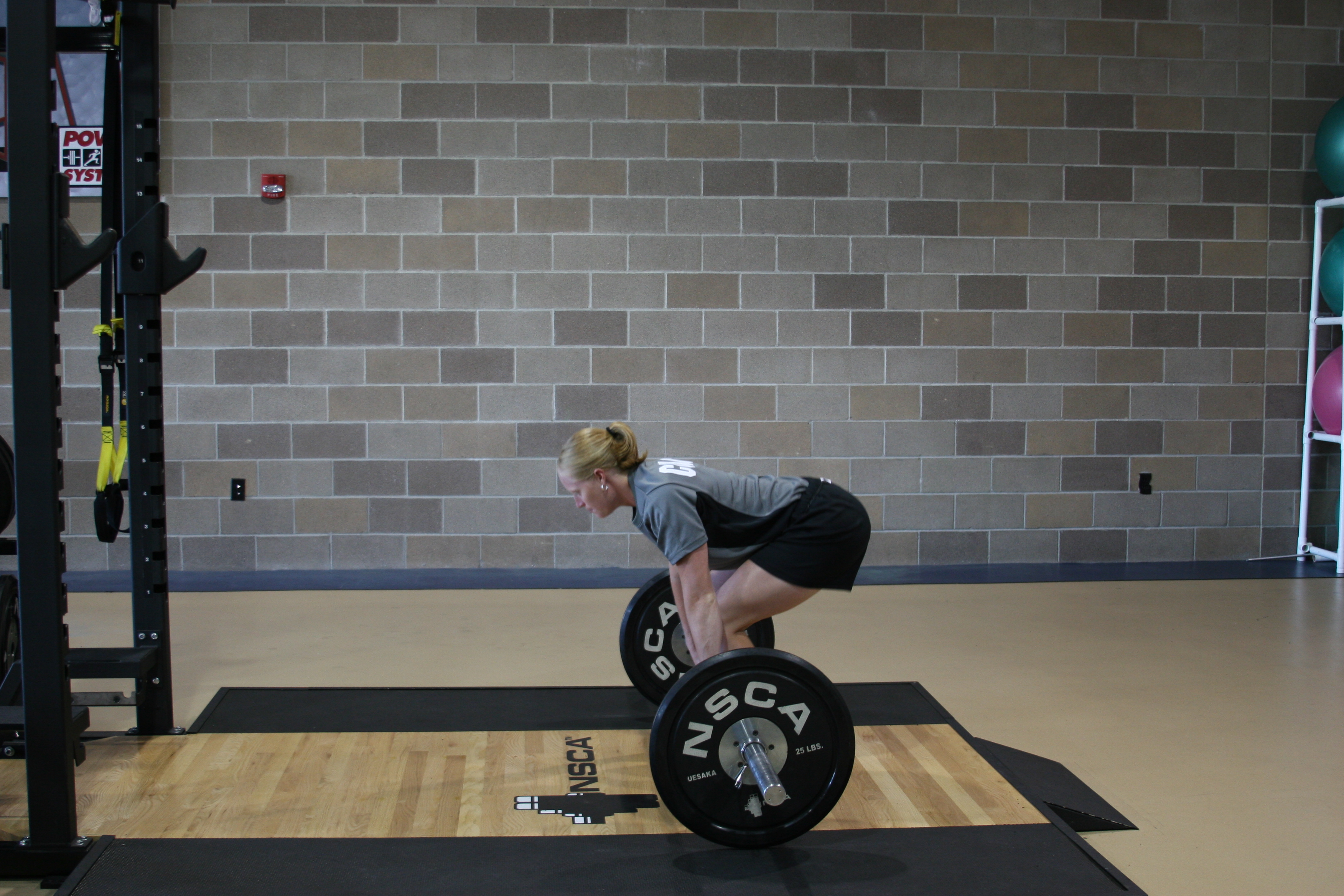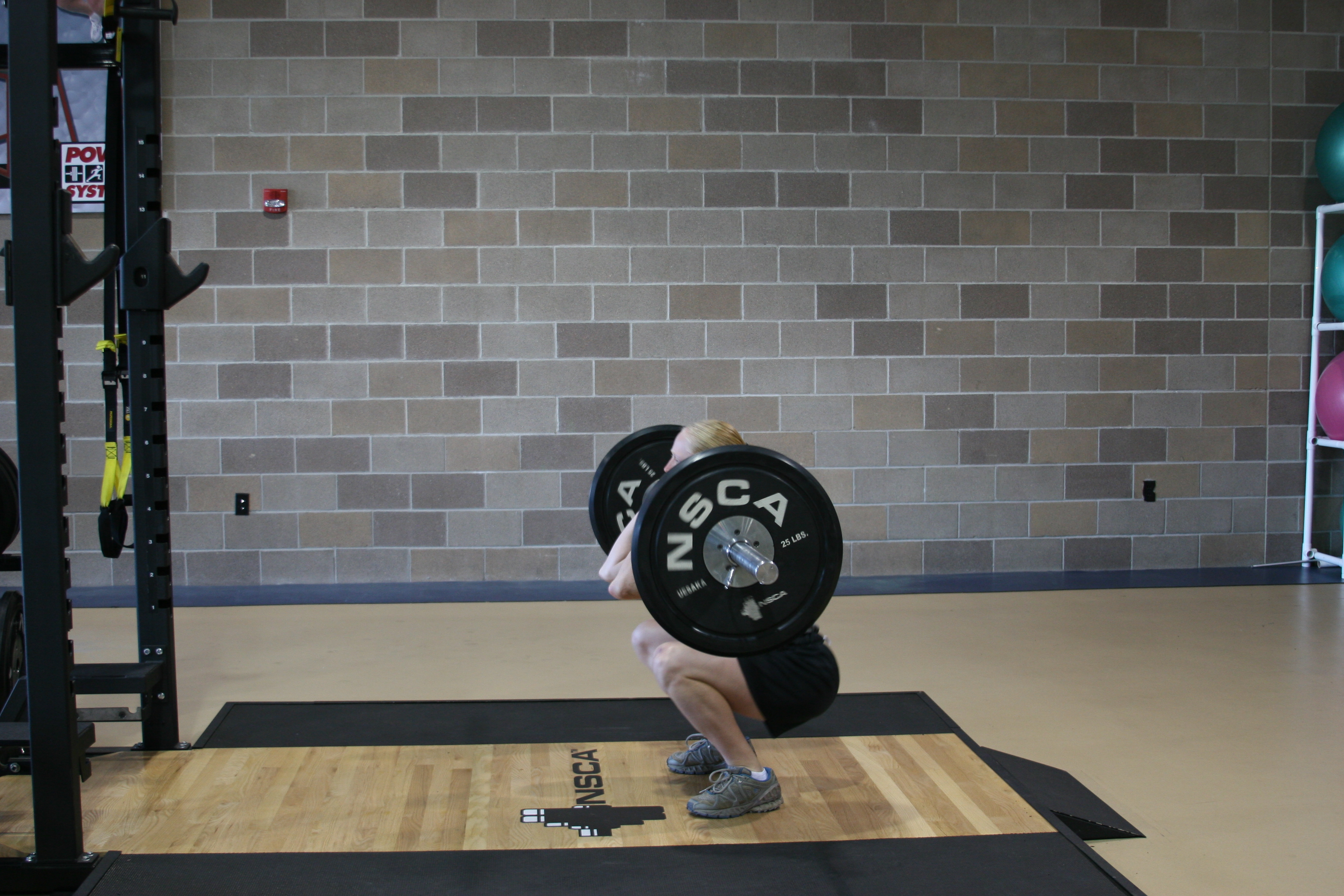Jan 29, 2015Developing Clean Technique
By Jason Dudley, MS, CSCS, USAW-1
 The clean can be utilized to enhance overall athletic performance by developing total body power. It can be used as part of a training program to improve rate of force development, total body strength and power, triple extension, mobility and stability, kinesthetic awareness, and body control under an eccentric load. Here is written and visual demonstration of how to correctly perform the clean.
The clean can be utilized to enhance overall athletic performance by developing total body power. It can be used as part of a training program to improve rate of force development, total body strength and power, triple extension, mobility and stability, kinesthetic awareness, and body control under an eccentric load. Here is written and visual demonstration of how to correctly perform the clean.
Technique
The clean is a complex movement and instruction should be given by a Certified Strength and Conditioning Specialist (CSCS and/or USAW-1). Under the supervision of an exercise professional, an athlete should take the time to master the technique of the clean before moving on to heavier loads.
If an athlete does not master the technique before moving on to a heavier load, it can put the athlete at risk of suffering an injury, as well as prevent the athlete from achieving his or her full potential in the lift. Athletes who do not take the time to master the technique of the lift often find themselves reaching a point where they are unable to increase the weight they are lifting due to poor technique.
In order to develop proper technique, the clean can should be broken down into smaller phases if the athlete is struggling with the overall movement. The first pull, triple extension, and the catch are three phases of the clean (outlined below) that can be worked on individually.
When working on individual phases of the lift, make certain the athlete masters that particular phase before moving on to the next phase. Keep the instructions in each phase very basic. If an athlete is given too many instructions at one time, it may negatively affect their technique and discourage them from investing the time needed to develop the proper technique of the overall lift.
Once the athlete has mastered each individual phase, they can put the three phases together to perform a proper clean. Breaking the clean down and teaching it in phases is worth the time investment in the long run. To develop proper technique, use the phases and guidelines below and keep instruction basic.
Starting Position
 1. The feet should be hip-width apart and flat on the floor. This can be adjusted slightly depending on the individual athlete and should resemble their natural jumping position. 2. The hands should be pronated (palms toward the athlete) and slightly wider than shoulder-width apart with the arms outside of the legs. 3. The arms should be fully extended without any flexion in the elbow. 4. The back should be flat with the hips higher than the knees. 5. The shoulders should be slightly in front of the bar. 6. The eyes should be focused forward with the head in a comfortable position.
1. The feet should be hip-width apart and flat on the floor. This can be adjusted slightly depending on the individual athlete and should resemble their natural jumping position. 2. The hands should be pronated (palms toward the athlete) and slightly wider than shoulder-width apart with the arms outside of the legs. 3. The arms should be fully extended without any flexion in the elbow. 4. The back should be flat with the hips higher than the knees. 5. The shoulders should be slightly in front of the bar. 6. The eyes should be focused forward with the head in a comfortable position.
First Pull
1. The athlete should extend their knees to begin moving the barbell from the platform. 2. The athlete’s hips and shoulders should rise simultaneously to ensure the starting angle of the back is maintained. 3. The bar should remain close to the athlete’s body, moving only vertically. 4. As the bar rises vertically, the athlete’s shoulders should remain slightly in front of the bar. 5. The arms should remain extended to avoid using the arms to move the bar vertically.
Triple Extension
1. After the first pull is complete (when the barbell passes just above the knee), the hips begin to extend and the knees will flex slightly and move under the bar. This often occurs naturally. 2. The arms should remain extended throughout this phase. The arms are simply used as a lever to transfer power created by the athlete to the bar. 3. The athlete will then extend the ankles, knees and hips (triple extension) as powerfully as possible to accelerate the bar vertically. 4. Simultaneous to performing triple extension, the athlete will shrug their shoulders to generate additional power, while keeping their arms extended.
Catch
 1. When triple extension is complete, and the bar continues to rise vertically, the athlete will flex at the ankle, knee and hip to drop into a squat position to catch the bar. 2. The athlete should maintain a firm grip on the barbell as their elbows flex, keeping their elbows high, to allow them to keep the bar close to their body as they drop to catch the bar. 3. The athlete should drop into a squat position and simultaneously rotate their elbows underneath the bar until the elbows are pointing forward. 4. As the bar comes to rest on the front of the shoulders, the athlete should stabilize the bar in the front squat position before lifting the bar to the standing position.
1. When triple extension is complete, and the bar continues to rise vertically, the athlete will flex at the ankle, knee and hip to drop into a squat position to catch the bar. 2. The athlete should maintain a firm grip on the barbell as their elbows flex, keeping their elbows high, to allow them to keep the bar close to their body as they drop to catch the bar. 3. The athlete should drop into a squat position and simultaneously rotate their elbows underneath the bar until the elbows are pointing forward. 4. As the bar comes to rest on the front of the shoulders, the athlete should stabilize the bar in the front squat position before lifting the bar to the standing position.

Jason Dudley is an Education Coordinator for the National Strength and Conditioning Association. For more information on the clean and other lifts, visit www.nsca-lift.org.



